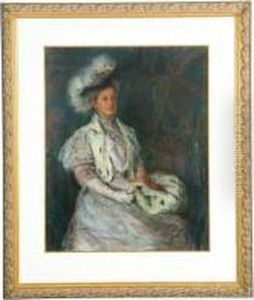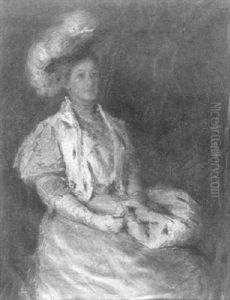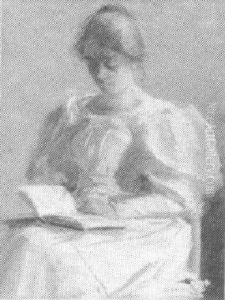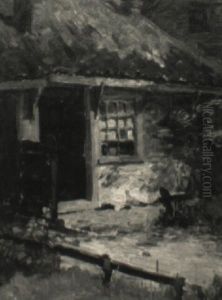Letta Crapo Smith Paintings
Letta Crapo Smith was an American artist, born in 1862 in Flint, Michigan. She was part of a prominent family; her father was Henry Howland Crapo, a successful businessman, governor of Michigan (1865-1869), and U.S. Congressman. Her grandfather, Henry Crapo, was also a notable figure in the lumber industry and politics. This background provided her with the support and resources to pursue her artistic talents from a young age.
Letta Crapo Smith's artistic journey took her to Europe, a common practice among American artists of the time seeking to refine their skills and absorb the rich artistic traditions of the continent. She studied in Paris, immersing herself in the vibrant art scene of the late 19th century. During her time in Europe, she was exposed to various art movements and techniques, which influenced her work. Despite the challenges faced by women in the arts during this era, Smith managed to carve out a space for herself, showcasing her work in exhibitions and gaining recognition for her talent.
Her art mainly focused on still life, landscapes, and portraits, embodying the detailed and delicate style characteristic of the period. Smith also had a keen interest in botanical illustration, a field in which she excelled due to her attention to detail and the precision of her work.
Upon returning to the United States, Letta Crapo Smith continued to develop her art, participating in local and national exhibitions. She was part of a generation of female artists who contributed to breaking barriers for women in the art world, although they often remained overshadowed by their male counterparts. Despite this, Smith's work was well received by her contemporaries, and she managed to build a modest but dedicated following.
Letta Crapo Smith passed away in 1921, leaving behind a body of work that, while not widely known today, offers valuable insights into the world of American art in the late 19th and early 20th centuries. Her contributions to art, particularly in the realms of still life and botanical illustration, reflect the broader movements of her time while also highlighting her unique perspective as a woman navigating the art world of her era.



